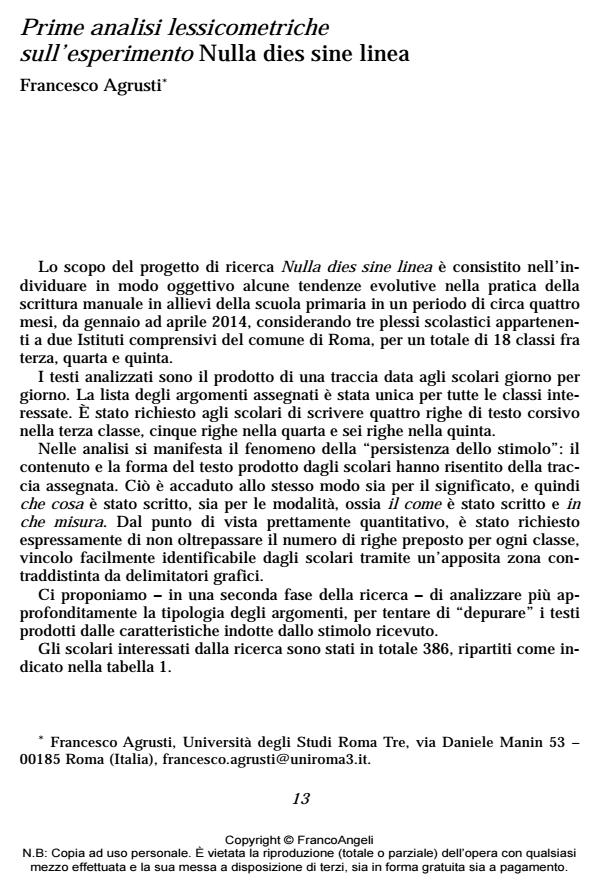Prime analisi lessicometriche sull’esperimento Nulla dies sine linea
Titolo Rivista CADMO
Autori/Curatori Francesco Agrusti
Anno di pubblicazione 2015 Fascicolo 2014/2
Lingua Italiano Numero pagine 28 P. 13-40 Dimensione file 176 KB
DOI 10.3280/CAD2014-002003
Il DOI è il codice a barre della proprietà intellettuale: per saperne di più
clicca qui
Qui sotto puoi vedere in anteprima la prima pagina di questo articolo.
Se questo articolo ti interessa, lo puoi acquistare (e scaricare in formato pdf) seguendo le facili indicazioni per acquistare il download credit. Acquista Download Credits per scaricare questo Articolo in formato PDF

FrancoAngeli è membro della Publishers International Linking Association, Inc (PILA)associazione indipendente e non profit per facilitare (attraverso i servizi tecnologici implementati da CrossRef.org) l’accesso degli studiosi ai contenuti digitali nelle pubblicazioni professionali e scientifiche
The purpose of the research project Nulla dies sine linea was to identify some trends in handwriting practices of primary school students over a period of about four months. The article presents the preliminary lexicometric and descriptive analyses carried out on the set of texts collected, that formed a corpus of approximately 1,807,836 characters, corresponding to 393,696 words. First, a description of the architecture of the lexicon (such as the corpus, graphemes, words, etc.) is provided, both from a general point of view, and from the specific aims of the research project (i.e. in relation to the background variables). Finally, major results are presented.
Parole chiave:Handwriting, primary school, lexicometric analysis, composition, background variables.
- La mente, le azioni, i segni. Premessa Benedetto Vertecchi, Cinzia Angelini, Antonella Poce, Emma Nardi, Francesco Agrusti, Nader Harb, in CADMO 1/2017 pp.101
DOI: 10.3280/CAD2017-001010
Francesco Agrusti, Prime analisi lessicometriche sull’esperimento Nulla dies sine linea in "CADMO" 2/2014, pp 13-40, DOI: 10.3280/CAD2014-002003